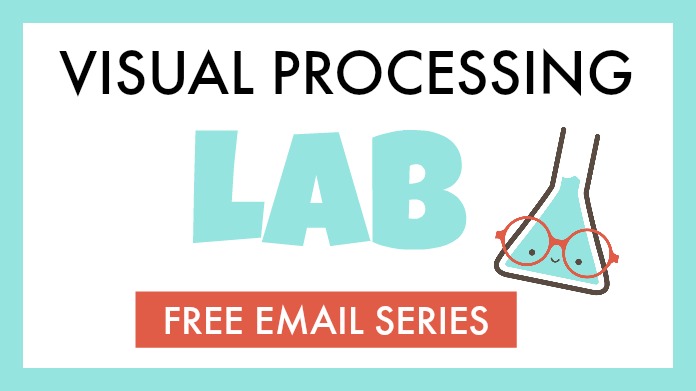Many parents see their child switch hands during tasks, or show refined use of both hands and wonder if their child is ambidextrous. Maybe a child uses their left hand to throw a ball, but bats with their right hand. Maybe they kick a ball with their right foot, but hold a pencil with their left hand. Ambidexterity is a common question among parents of kids who switch hands in activities or don’t use one hand consistently.
In this blog post, you’ll find information on
Ambidextrous Or Mixed Dominance?
Here, we are covering several aspects of ambidexterity. We’ll go over the difference between being ambidextrous and having mixed dominance. We’ll cover what it means when a child uses both hands to write or color. And, we’ll go over some activities to support a dominant hand.
How do you know if your child is ambidextrous or if they are showing signs of mixed dominance? This post will explain a little more about ambidexterity as well as mixed dominance and what it means in motor skills.
Ambidextrous refers to use of both sides of the body in equal ability and refined finger dexterity. This can refer to a bilateral refined movement and skill in the hands, feet, and eyes. Ambidexterity is the ability to use both hands equally well. It means that a person can perform tasks with either hand without any noticeable preference.
Cross dominance refers to a situation where a person’s dominance does not favor one side over the other. In simpler terms, it means that your child hasn’t developed a clear preference for using either their right or left hand for tasks.
Mixed dominance is an other name for cross dominance. It can extend beyond just hand preference and also involve other body parts like the eyes or feet. For example, a child with mixed dominance may have a dominant hand different from their dominant eye or foot. This means that their dominance is spread across different sides of their body.
In other words, cross dominance or mixed dominance is different than ambidextrous in that an individual with cross dominance might switch between dominant sides depending on the task they’re performing. For instance, they may write with their right hand but prefer to eat with their left hand.
Let’s break this down further to explore ambidexterity.

What does Ambidextrous Mean?
The definition of ambidextrous is use of both hands with equal refined precision and motor skill. This means that each side of the body is equally able to write with natural motor planning, fine motor control, strength, and refined motor movements.
According to the definition of ambidexterous, there is equal refinement and precision. You might think this means just the hands and fingers are involved with equal use of both sides. However, that’s not exactly the case.
Those who are truly ambidextrous may have equal use of hands, as well as feet, eyes, and even toungue motor skills.
An ambidextrous child will play naturally with toys using both hands. You might notice equal use of the hands and feet, or switching left to right or right to left during play, sports, school work, and other tasks.
When it comes to someone being ambidextrous and fine motor involvement, this can refer to:
- Writing
- Scissor use
- Clothing fasteners
- Play
- Hand strength
- Brushing teeth and hair
- Many other every day tasks
Ambidextrous also refers to the feet too.
An ambidextrous person will be able to kick equally strong and with the same amount of force with both feet. They are able to “take off” from a running stance with equal feet placement, whether they start out running on their left foot or their right foot. Gross motor ambidexterity can be seen in:
- Jumping
- Running
- Skipping
- Hopping
- Balance
- Kicking a ball
- Throwing a ball
- Catching a ball
- Among many other every day tasks
Ambidexterity can be observed in the eyes, too. Typically, all of us have one eye that is stronger, or a naturally dominant eye. We can complete a visual screening to identify this, or a visual exam may be in order.
Finally, an ambidextrous individual may show motor overflow movements with the tongue to both sides of the body.
Are you wondering about a child who uses both hands to write or perform tasks? Maybe you know a child who uses both hands equally and with equal skill. Perhaps your child uses one hand for specific tasks and their other hand for other tasks.
Mixed Dominance or Ambidexterous?
Just yesterday on The OT Toolbox, we discussed mixed dominance. In this post, we will cover more about true ambidexterity and what that means.
A child with mixed dominance demonstrates clear, stronger patterns based on the side of the body they are utilizing to complete the task.
For example, a child who is left hand dominant will develop a stronger fine motor pattern then a child who is not left side dominant but compensating for fatigue and is moderately adept at utilizing the left hand as a coping skill.
Is my child ambidextrous
A child who is truly ambidextrous will be equally as skilled at utilizing both sides of the body and it will look and feel natural to the child. Statistically, only 1% of the population is truly ambidextrous—it’s really very rare, and it is more likely that your child is experiencing mixed dominance patterns.
True ambidexterity requires both hands to be used with equal precision and there is no true preference in either the right or left hand for either both fine or gross motor tasks.
Can you make yourself ambidextrous?
This is an interesting question. Many times there is a perceived benefit to being ambidextrous, or switching hand or foot use during a task. Some perceived benefits might be:
- Switching hands when one is fatigued from use during a task
- Switching dominant sides during a sport such as baseball or softball to pitch with the other arm, batting from another side, dribbling to the other side when bringing up the ball during basketball, or kicking a ball with the other foot during soccer.
- Writing equal legibility with both hands
Actually being ambidextrous is different than teaching yourself to become ambidextrous.
To use both sides of the hand as a learned concept takes cognitive attention whereas natural ambidexterity occurs without thought. Because of the neuroplasticity of the brain, humans have the ability to teach themselves to use their non-dominant hand or side to complete tasks. It takes practice, practice, and more practice.
Read here on motor planning where we cover this concept.
Ambidexterity or Mixed Dominance?
Is my child ambidextrous? Isn’t that what mixed dominance is? These are two questions that therapists get asked frequently when evaluating a child for the first time for mixed dominance and other concerns. The answer is no, they are not the same thing.
This is a tricky area. Therapists recognize mixed dominance as a miscommunication or poor integration of the left and right sides of the brain and that’s how it’s explained to parents. However, there is a lot of information out there on this topic that may or may not be relevant to your child and her struggles— keep this in mind when Googling information.
It is more likely, that your child’s brain is utilizing the left and right sides for very specific motor skills such as writing, eating and throwing a ball. This can lead to motor confusion—this is where the poor integration and lack of communication between the left and right sides of the brain comes into play.
When the child is not utilizing one side of the brain more dominantly for motor patterns, confusion and poor motor learning occur leading to delays and deficits in motor skills.
how to tell if your child is ambidextrous
It is unclear why the brain develops this way, but it does happen, and it is okay. In fact, it is easily addressed by an occupational therapist.
Determining if your child is ambidextrous, meaning they have equal proficiency and comfort using both hands, can require some observation. Here are a few signs that may indicate ambidexterity in your child:
- Equal use of hands
- Kicks a ball with either foot with equal distance and force
- Balances on each leg equally
- Equal tongue movements laterally
- Proficient functional performance with either side of the body
- Efficient use of tools with assistance of the other hand: scissor use, pencil use, feeding utensils, and other functional tools
In addition to these abilities, you can take a look at areas of functional performance. These include the underlying skills that impact function.
- Frequent hand-switching: Observe if your child regularly switches hands during activities such as writing, drawing, eating, or playing sports. Ambidextrous individuals often demonstrate fluidity in using either hand without a clear preference.
- Equal proficiency: Notice if your child shows similar levels of skill and coordination when using both hands for various tasks. They may exhibit no significant difference in handwriting quality, drawing ability, or manipulating objects with either hand.
- Ease in learning new skills: Ambidextrous children tend to adapt quickly when asked to perform tasks with either hand. They may show little to no difficulty when switching hands for activities.
- Mirror-like movements: Pay attention to your child’s movements. Ambidextrous individuals may display symmetrical movements, where actions performed with one hand can be mirrored almost identically by the other hand.
- Lack of hand dominance: Ambidexterity implies the absence of a clear hand dominance. If your child does not consistently favor one hand over the other for a majority of tasks, it suggests a potential ambidextrous inclination.
Ambidexterous Motor Development
I already touched on this a little, but a child with mixed dominance may switch sides for task completion when experiencing fatigue. Due to this, their motor development and precision is typically delayed.
The most common area that this is noted in is in fine motor development for handwriting. This is because the child is equally, but poorly skilled with both hands, and will switch hands to compensate for fatigue.
Motor delays may also be noticed later on when it comes to the reciprocal movements needed to throw/catch or kick a ball and when skipping. A child with mixed dominance may attempt to catch and throw with the same hand, hold a bat with a backwards grip, or stand on the opposite side of the plate when hitting.
They may also experience a moderate level of confusion, and frustration as they are unsure of how to make the two sides of their body work together leading to overall poor hand/foot-eye coordination skills.
For a few fun hand dominance activities, try these ideas to help kids establish a
Ambidextrous hands and eyes
If you have more questions and want to learn more on a dominant eyes and understanding how the eyes and hands work together during activities, you’ll want to check out our Visual Processing Lab.
It’s a 3-day series of emails that covers everything about visual processing, visual motor skills, and eye-hand coordination. We take a closer look at visual skills and break things down, as well as covering the big picture of visual needs and how the hands and eyes work together.
In the visual processing lab, you will discover how oculomotor skills like smooth pursuits make a big difference in higher level skills like learning and executive function. The best thing about this lab (besides all of the awesome info) is that it has a fun “lab” theme. I might have had too much fun with this one 🙂
Join us in visual processing Lab! Where you won’t need Bunsen burners or safety goggles!
Click here to learn more about Visual Processing Lab and to sign up.
ambidextrous eye dominance
Hand preference is something we are often aware of, whether we are right-handed or left-handed. However, many parents may not realize that we also have a preferred or dominant eye. This aspect of eye dominance is often overlooked because we typically use both eyes together for most activities.
So, how can you determine which eye is dominant?
Observing monocular tasks: When using a camera, telescope, microscope, or squinting with one eye. Pay attention to which eye you naturally prefer to use. This eye is typically your dominant eye. In most cases, eye dominance aligns with handedness, meaning that if you are right-handed, you are more likely to be right-eye dominant. However, there are instances where the dominant eye may differ from handedness.
Knowing about eye dominance is important because it can help to gain insights about a child’s visual processing and to identify any variations in eye-hand coordination. This knowledge can be particularly helpful when engaging in activities that require controlled motor planning, speed and timing of movement, and accuracy.

Colleen Beck, OTR/L has been an occupational therapist since 2000, working in school-based, hand therapy, outpatient peds, EI, and SNF. Colleen created The OT Toolbox to inspire therapists, teachers, and parents with easy and fun tools to help children thrive. Read her story about going from an OT making $3/hour (after paying for kids’ childcare) to a full-time OT resource creator for millions of readers. Want to collaborate? Send an email to contact@theottoolbox.com.







